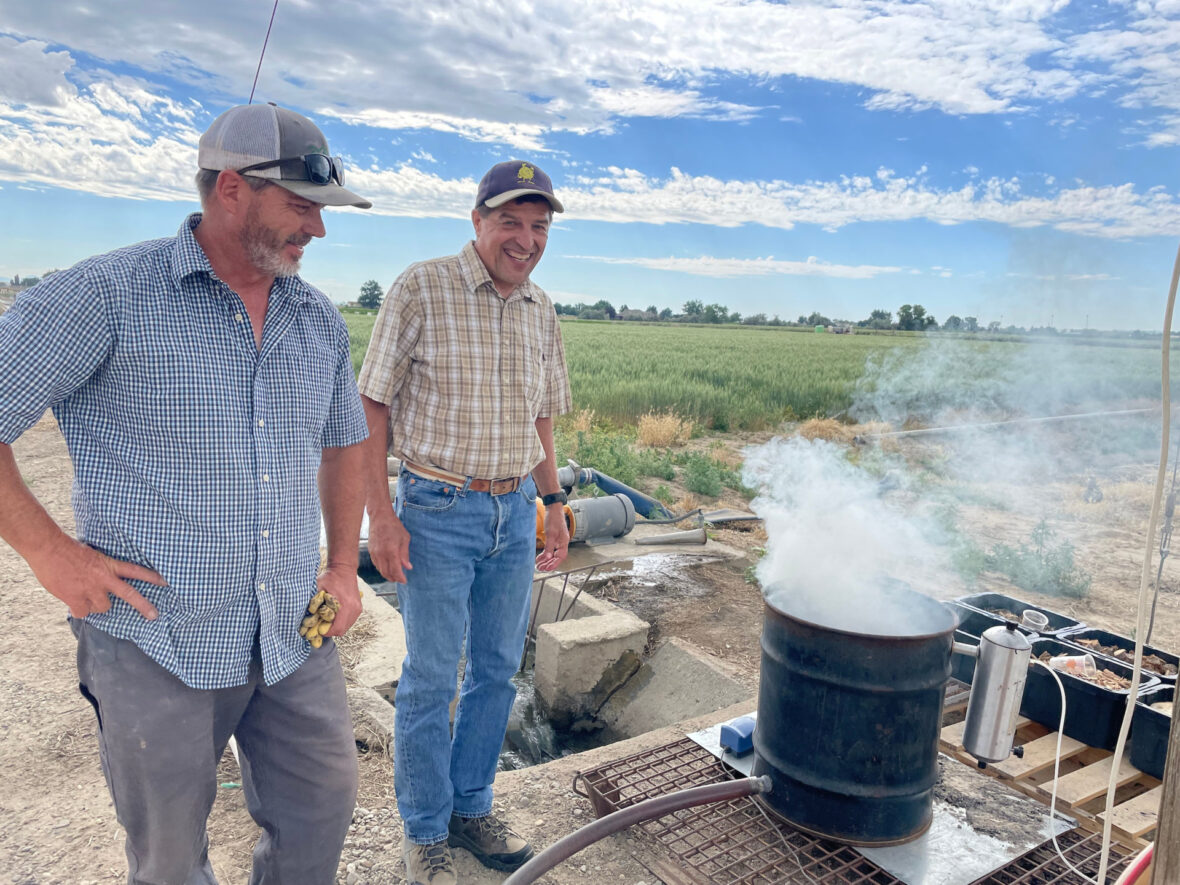
How does Idaho’s smoke season affect Idaho’s potato harvest?
Boise State University and University of Idaho researchers are teaming up to look for answers.
The two-year joint project will focus on the chemical impact wildfire smoke has on potatoes, and whether some potato varieties are more smoke-resistant.
Previous studies have suggested that ozone and other components of smoke can affect potato growth. But research into the chemical relationships between smoke and potato plants has been limited.
“Observations from industry started all of this,” said Mike Thornton, a professor in the U of I’s Department of Plant Sciences. “When we have had bad, smoky years, yields are down and processing quality is down. Our hypothesis is smoke exposure causes that.”
But the relationship between smoke and potato crops could be complicated. Smoke reduces available sunlight and leads to higher nighttime humidity, and both hamper potato growth. But smoke also contains carbon dioxide that could be beneficial to potatoes.
At the U of I’s Parma Research and Extension Center, researchers pumped smoke from pine needles, sagebrush and wood into some covered potato plots. Other plants grew in a smoke-free environment as a control sample.
The potatoes will be analyzed at harvest, after six months in storage and after they are processed into frozen French fries.
“It will tell us what differences there are between a control and a treatment potato so we can pinpoint which metabolites — chemicals within a potato — change due to exposure to smoke,” said Owen McDougal, chair of Boise State’s chemistry department.
A $125,000 federal block grant is paying for the research.
Idaho’s U.S. News and World Report college rankings
U.S. News and World Report has issued its annual college rankings.
Here’s how Idaho’s schools graded out this year:
University of Idaho: Ranked No. 176 in the national universities division, out of 443 universities overall, up from No. 179 a year ago. Ranked No. 26 for best value, it was the third year the U of I has topped all universities in the West for best value. “Three years of Best Value in the West proves we are doing things right,” President Scott Green said in a news release. “Our scholarship support is unmatched, and Vandals show over and over again that they are ready to take their place in industry after graduation.”
Boise State University: Ranked between No. 331 and No. 440 in the national universities division. (U.S. News and World Report doesn’t rank all schools in divisions.)
Idaho State University: Ranked between No. 331 and No. 440 among national universities.
College of Idaho: Ranked No. 4 among regional colleges in the West, out of 102 schools overall. Ranked No. 11 for social mobility, and No. 12 for best value.
Brigham Young University-Idaho: Ranked No. 14 among Western regional colleges, up from No. 16 a year ago. Ranked No. 37 for social mobility.
Lewis-Clark State College: Ranked No. 23 among Western regional colleges, down from No. 21 a year ago. Ranked No. 7 for best value, No. 10 among public colleges in the region and No. 45 for social mobility. “While we’re pleased by such rankings, our greatest validation and pride comes directly from our students,” Lewis-Clark President Cynthia Pemberton said in a news release.
Northwest Nazarene University: Ranked No. 35 among Western regional universities, out of 117 institutions overall. NNU ranked No. 51 in this category a year ago. Ranked No. 9 for best value, No. 26 among best schools for veterans and No. 38 in social mobility.
U.S. News and World Report grades colleges and universities on 17 criteria, including graduation and retention rates, faculty resources and “undergraduate academic reputation.”
NSF grant will fund scholarships for Idaho State transfer students
Students transferring to Idaho State University could receive two-year scholarships, through a National Science Foundation grant.
The $1.5 million grant could fund 45 scholarships over four years, starting in 2023-24. The scholarships will be available to low-income students seeking a bachelor’s degree in biology, microbiology, biochemistry or chemistry.
“Transfer students face unique challenges when they begin at a new school, and a big one is finding their place in a university’s research community,” said Anna Grinath, an Idaho State assistant professor in biology education research.
The grant will also fund a new course: Fully Immersive Research Exploration, or FIRE. The course will be designed to give first-semester transfer students an overview of research opportunities at Idaho State.
